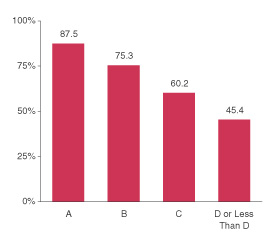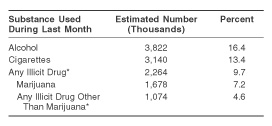End Notes
- The 10 selected youth activities were youth center activities, Scouts, private lessons, team sports, 4-H club, volunteer work, church choir, school clubs, student government, and school band.
- Approximately 69 percent of surveyed youths aged 12 to 17 were included in these analyses. The remaining 31 percent of youths either attended schools that did not give letter grades, left the question blank, did not attend school, or were not asked about letter grades.
- Hawkins, J.D., Catalano, R.F., & Miller, J.Y. (1992). Risk and protective factors for alcohol and other drug problems in adolescence and early adulthood: Implications for substance abuse prevention. Psychological Bulletin, 112(1), 64-105.
- Lane, J., Gerstein, D., Huang, L., & Wright, D. (2001). Risk and protective factors for adolescent drug use: Findings from the 1997 National Household Survey on Drug Abuse (Analytic Series: A-12, DHHS Publication No. SMA-01-3499). Rockville, MD: Substance Abuse and Mental Health Services Administration.
- Black, S. (2002, June). The well-rounded student. American School Board Journal, 189, Retrieved August 12, 2002, from http://www.asbj.com/2002/06/0602research.html.
Figure and Table Notes
* Any illicit drug refers to marijuana/hashish, cocaine (including crack),
inhalants, hallucinogens, heroin, or any prescription-type drugs used nonmedically.
Any illicit drug other than marijuana indicates use at least once of any
of these listed drugs, regardless of marijuana/hashish use; marijuana/hashish
users who also have used any of the other listed drugs are included.
**Respondents aged 12 to 17 who reported not being enrolled in school
during the past year or those who did not answer 5 or more of the selected
activity questions with a "yes" or "no" response were
excluded. The 10 selected youth activities were youth center activities,
Scouts, private lessons, team sports, 4-H club, volunteer work, church
choir, school clubs, student government, and school band.
Source (table and all figures):
http://www.oas.samhsa.gov/NHSDA/2kNHSDA/2knhsda.htm
|





